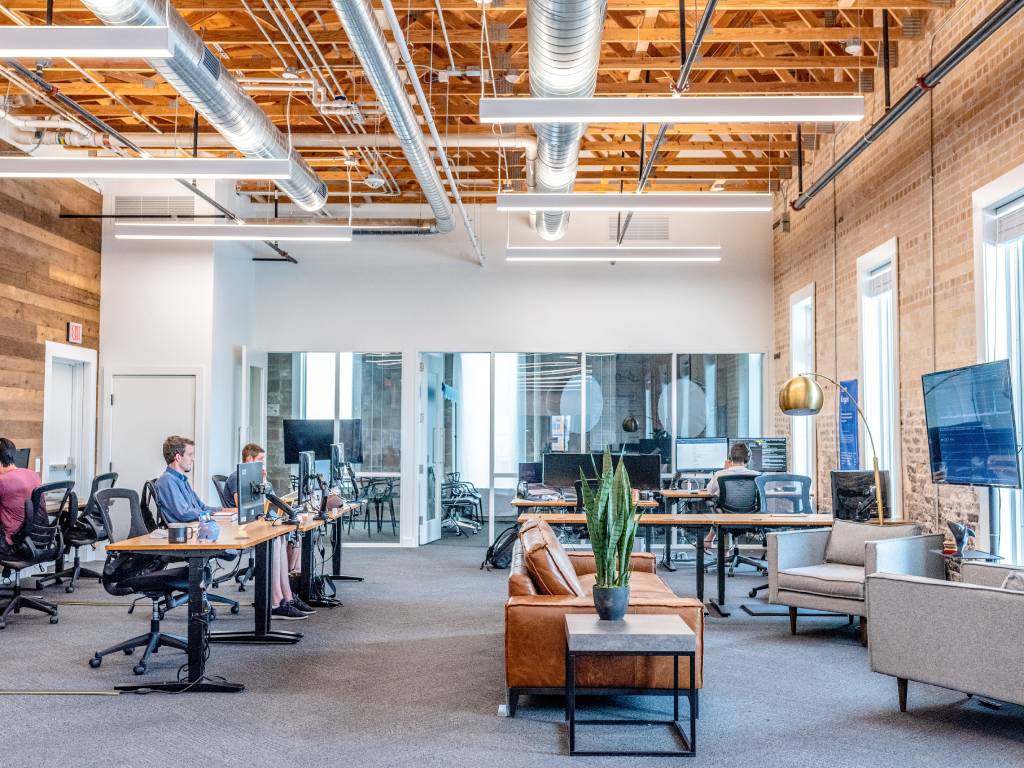 Over 50% of Americans are distracted in the workplace. Some of the top distractions include office noise and the temptation to check social media. Daily distractions might not seem like a problem, but they can be.
Over 50% of Americans are distracted in the workplace. Some of the top distractions include office noise and the temptation to check social media. Daily distractions might not seem like a problem, but they can be.
The truth is that distracted employees are more prone to making mistakes. We all want our workplaces to be comfortable and pleasing, and to achieve that; we need to find ways to increase employee engagement while minimizing distractions. Luckily for you, we’ve created this short guide with the best safety awareness tips.
How can you promote a safe work environment all year long? Read on to find out.
Safety at Work Starts With Training
A safe work environment starts with training. This holds for construction sites, offices, restaurants, grocery stores, and beyond. It doesn’t matter what industry it is; employee training is the foundation of workplace safety.
The more efficient the onboarding processes, the easier it’ll be for employees to follow safety regulations. Find a thorough online onboarding software that’ll make it easy to provide digital training. By giving employees access to online lessons and video content, you’ll be able to track their progress.
Onboarding should be the beginning of employee training. Once you start delving into the different safety topics, you’ll be amazed at how many relevant issues there are.
It’s easy for employers to believe that office employees don’t need continual training. However, everyone can use a refresher on reacting to a tornado or the best ways to avoid tripping hazards.
Slips fall, and trips make up 700 fatalities a year. Everything you can do to raise awareness will help.
Employee Safety for New Drivers
Are you hiring an employee who will be driving a workplace vehicle? Then it’s crucial that you thoroughly vet their driving history. Be strict about what driving violations you’ll allow and which are unacceptable.
For instance, if the employee has a ticket for a broken tail light, that could be a good offense. However, if the employee was in an at-fault accident, they shouldn’t be on your team. By focusing on hiring safe drivers, you’ll be able to promote a workplace of like-minded individuals.
As a bonus, when you hire safe drivers, you can usually keep your insurance premiums reasonable. Providers love knowing that they’re ensuring licensed drivers who care about abiding by the road rules.
When interviewing potential drivers, look beyond their motor vehicle report. Ask them questions about how they respond to different situations on the road, and listen for any red flags. Will this be an employee who will make wise decisions for your company? Or are they going to rush to meet delivery times?
Drivers who focus on safety over any other goal should be your priority. Abiding by company regulations and exceeding customer expectations are also good traits.
Reward Safe Behavior
What if you’re not in the process of hiring new employees? What if you need to encourage your current employees to be as safe as possible? To motivate your existing staff, start setting up incentivized safety programs.
For instance, let’s say that you own delivery service. You could reward drivers for every year that they remain accident-free.
You can also set up more short-term bonus programs with different goals to reach. Keeping up with the vehicle’s maintenance, avoiding road hazards, and safely adhering to delivery deadlines could be a few short-term driver goals.
We also suggest looking into workplace investigation training. The more you empower employees with the resources to stay safe, the easier it’ll be to create the correct type of safety-focused culture.
Office Safety Bonuses
 When you think of accidents happening at the workplace, what’s the first industry that comes to mind? Fast-paced restaurants or dangerous construction sites might be your first go-to. But you’d be surprised how many on-the-job accidents happen in a 9-5 office environment.
When you think of accidents happening at the workplace, what’s the first industry that comes to mind? Fast-paced restaurants or dangerous construction sites might be your first go-to. But you’d be surprised how many on-the-job accidents happen in a 9-5 office environment.
Sanitized workspaces equal less sickness, and what could be safer than that? Implementing an incentivized safety program for office workers is always a good idea. The safety program can include special bonuses for reporting trip hazards and cleaning workspaces.
You’ll also want to go above and beyond to encourage employee ergonomics for office workers and other industries. Neglected ergonomics can often be one of the biggest workplace dangers that quickly go unnoticed.
Encourage Ergonomics All Day Long
 Ergonomics is all about moving your body throughout the day in natural and supportive ways. Maintaining good posture is just one of the ways you can help support your spine and prevent workplace injuries. How you move around also matters.
Ergonomics is all about moving your body throughout the day in natural and supportive ways. Maintaining good posture is just one of the ways you can help support your spine and prevent workplace injuries. How you move around also matters.
Office environments are notorious for repetitive stress injuries such as carpal tunnel. If an employee doesn’t have a suitable desk set up, it’s easy for them to hurt their hands while typing or moving the mouse. Poor posture coupled with repetitive motions can cause injuries beyond carpal tunnel too.
Promoting office ergonomics starts with the workstation setup. Give your team adjustable chairs with removable armrests. If the armrest flips up, it’ll be easier for everyone to maintain proper posture while typing. It’s also good to invest in a vertical mouse since they encourage a more natural hand position.
What about work environments that aren’t office-related? How can you encourage your team to practice ergonomics there? Start by training employees on how to lift heavy items properly.
If it’s a job that requires physical labor, inform employees of the importance of stretching and warming up before work. You could also include pre-work stretching circles so that everybody can warm up together.
Expanding Employee Resources for Safe Footwear
What type of footwear do you allow employees to wear on the job site? If it’s an indoor environment, open-toed shoes can be safe.
However, ensure that employees always have a strap on the back of the shoe. Strapless shoes are more prone to catching on things, which can be a tripping hazard.
The question occurs – are there going to be a lot of heavy objects the employees encounter? Construction, warehouse, and factory settings can usually benefit from steel-toed shoes. Just make sure that employees wear high-quality shoes so that they don’t wind up stressing their feet out.
High-quality shoes will have good insoles and other ergonomic features. It’s always helpful if your company can offer new hires some reimbursement for buying footwear. This goes for all other personal protective equipment as well.
Explain the Importance of Breaks

Having a loyal team of employees can do wonders for productivity. It also creates a fun work atmosphere that attracts high-quality talent.
Loyal, talented employees tend to be overachievers. They’re usually prompt to go above and beyond to do whatever it takes to help a company succeed. While this is a beautiful trait, you have to keep it in balance.
Explain to employees the importance of taking all of their breaks. While it might seem like they’re doing the company a favor by working through their lunch, it’s not beneficial in the long run. When employees take regular breaks, it helps refresh and recharge their minds and bodies. So, it is vital to encourage employees to get away from their desks or workstation and go outside on their breaks.
Even walking around the interior of the building can help. If possible, allow for breaks to be at least 15 minutes long. This allows for a reasonable amount of time for employees to refresh and recharge.
Team members who don’t take breaks will be more prone to workplace fatigue. When employees are tired, they’ll be more likely to have accidents that can cause serious injuries.
Shortcuts Are Never Okay
Let everyone working for you know that shortcuts are never okay. No matter what.
It doesn’t matter if it means having to push back a delivery time or canceling an order. So you’re probably wondering, shouldn’t at any point an employee think that using a shortcut is the right way to solve a problem?
Instead, it would help if you had a transparent chain of command, making it easy to report issues that prompt a shortcut. For instance, if drivers are going to be late on a delivery, they have a straightforward way to record their delay.
Working excessive overtime can be a shortcut that you also have to watch out for. For instance, let’s say that an employee has a big project. However, the client increases their order, and the project suddenly triples in size.
If completing that project means the employee will have to work 12-hour days for an entire week, that’s not a healthy or safe working environment. Instead, there needs to be a way for employees to report work overloads and a way to manage employee hours in real-time. Discourage excessive overtime, and encourage team collaboration.
Creating a Safe Work Environment
Trust us; if you follow the tips in this article, you’ll be able to foster a safe work environment. Since it starts with hiring the right team, review your onboarding process today.
Is the training material explicit and easy to understand? Will employees have a direct point of contact for all of their safety-related and training questions?
The better safety programs are in your onboarding process, the safer (and stronger) your workforce will be. For more great ideas, just read another one of our posts.











